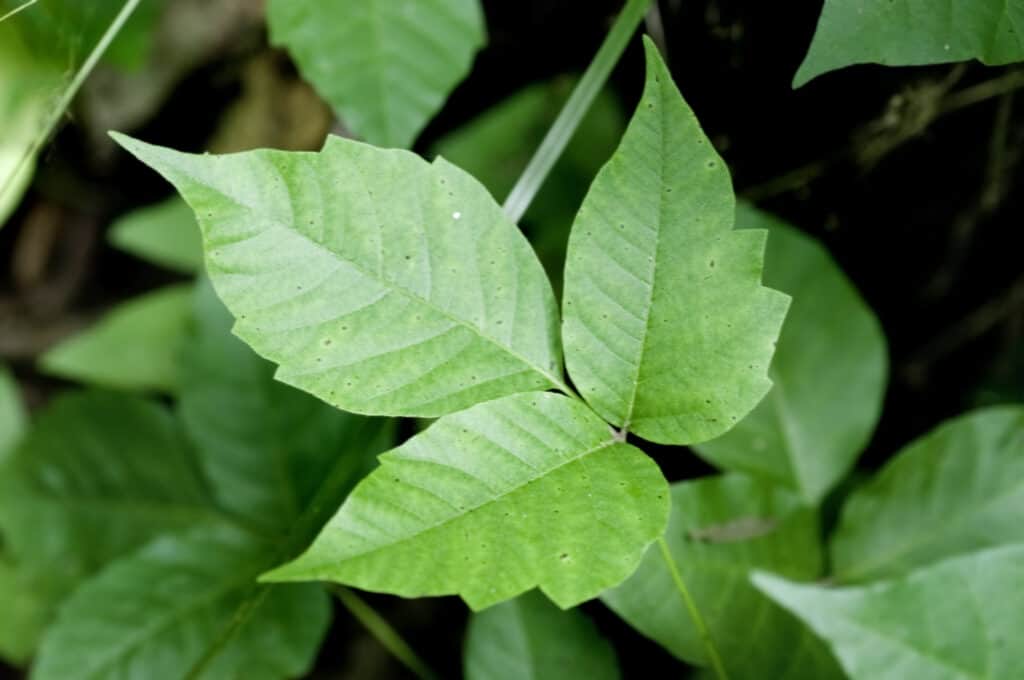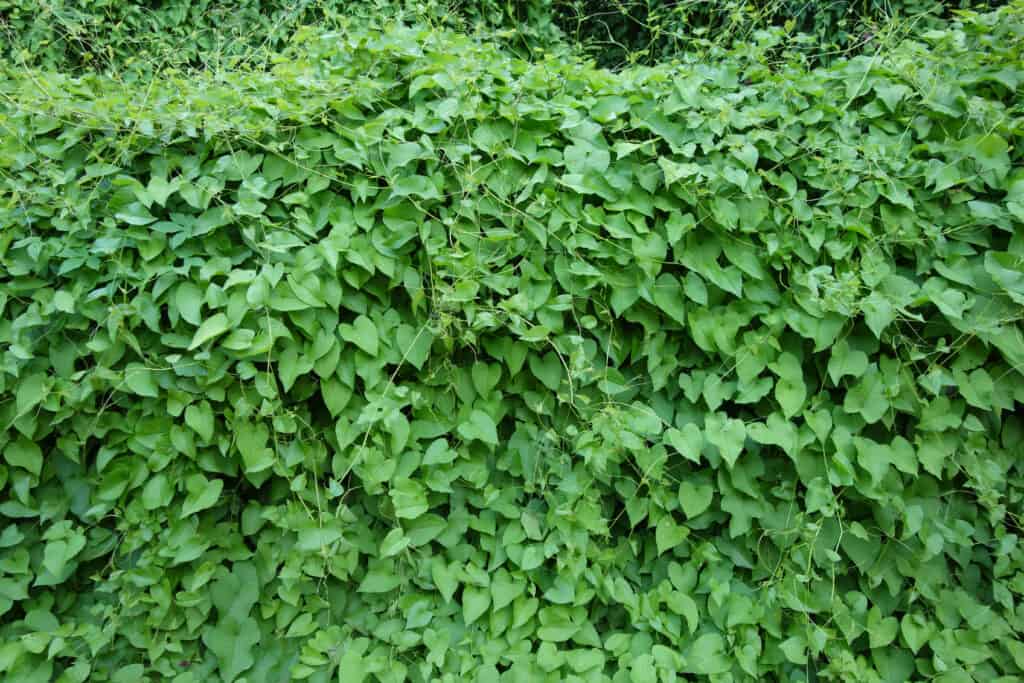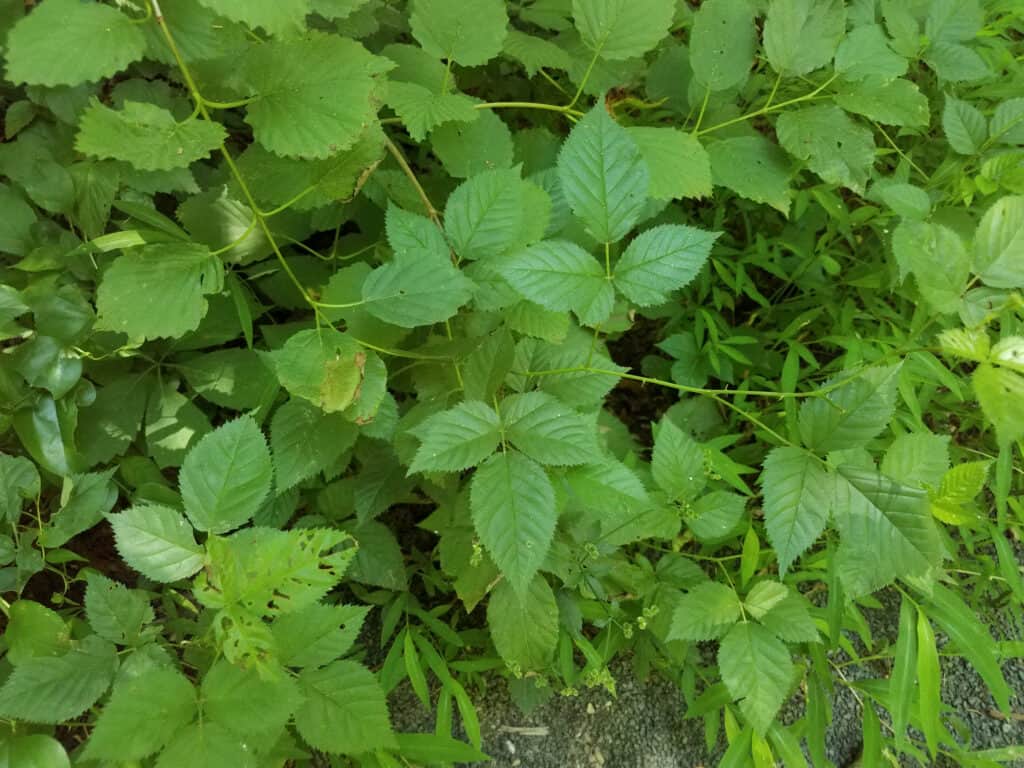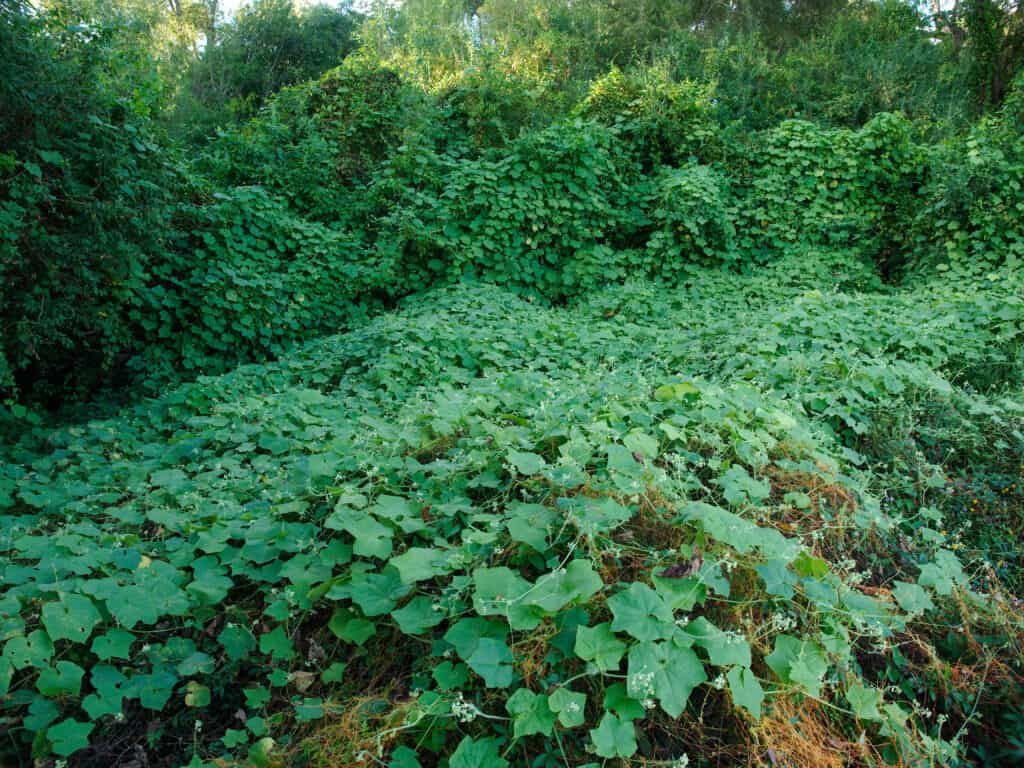If you enjoy hiking or camping, it’s necessary to know how to tell poison ivy apart from other plants. This skin irritant can really put a damper on your camping trip, especially if you happen to be very allergic to it. As a result, it is wise to know the difference between poison ivy and other vines or vine-like plants, such as the common kudzu.
In this guide, we’ll break down the key differences between kudzu and poison ivy. We’ll also explore why you might want to grow either plant or avoid them altogether.
Comparing Kudzu vs. Poison Ivy
| Kudzu | Poison Ivy | |
|---|---|---|
| Classification | Pueraria montana | Toxicodendron radicans |
| Alternative Names | Japanese Arrowroot, Chinese Arrowroot, Foot-a-Night Vine | Eastern Poison Ivy |
| Origin | China, Japan, India | Eastern North America, Asia |
| Description | A climbing perennial vine that is a member of the bean family. | An allergenic plant that can cause contact dermatitis in many different animals, including humans. |
| Uses | Used in traditional Chinese medicine to treat heart disease and the common cold. | Used in homeopathic medicine to treat arthritis and nerve pain. |
| Growth Tips | There aren’t many tips to grow kudzu, considering it is invasive and will grow almost anywhere. | Plant in areas with partial shade to direct sun. This plant can withstand most soil moisture levels. |
| Interesting Features | This fast-growing invasive plant can grow 60 feet in a growing season. | Despite being called poisonous, this plant contains an oil known as urushiol that causes skin rashes and eye irritation but is otherwise harmless. |
The Key Differences Between Kudzu and Poison Ivy
Due to significant similarities between them, kudzu and poison ivy are frequently mistaken for one another. Trifoliate leaves are seen on both plants, with the top leaflet having a much longer stem. Both plants have alternate leaflet vein patterns. Both plants’ leaf arrangement is alternating rather than parallel.
However, these two plants differ from one another in some important ways. To begin with, kudzu is safe, while poison ivy can cause skin irritation. Poison ivy isn’t a vine like kudzu is, instead, it usually takes the form of ground cover, resembling underbrush, though it can occasionally climb trees. Even yet, it can develop into a vine in some regions where it grows naturally.
It might be simpler to see poison ivy as vertical and kudzu as horizontal. It’s more likely poison ivy than kudzu if you notice shoots rising vertically into the air from the ground. Instead of sending shoots upward, kudzu will grow in all directions along its vine-like structure. If left unchecked, poison ivy is the type of plant that will grow into a bush. In reality, poison ivy may very easily be present if it resembles kudzu in bush form. In places that are frequently mowed or cleared but haven’t been recently, poison ivy is very prevalent. It can be found at poorly maintained campsites as well as on trails and in clearings.
To put it simply, you can tell by a plant’s leaves if it is kudzu or poison ivy. Kudzu is probably present if the majority of the leaves are round and lobed, while poison ivy is most likely present if the majority of the leaves have pointed lobes. Additionally, kudzu leaves are bigger than poison ivy leaves and have hairy undersides.

Poison ivy, known for causing skin irritation, is most likely present if the majority of the leaves have pointed lobes.
©Tim Mainiero/Shutterstock.com
Kudzu vs. Poison Ivy: Classification
Kudzu is classified as Pueraria montana. It is part of the legume family and is closely related to plants like chickpeas, beans, and peas.
Poison ivy is classified as Toxicodendron radicans. It is part of the Anacardiaceae family and is related to plants like cashews and mangos.
Kudzu vs. Poison Ivy: Description
Kudzu is a perennial climbing vine in the pea family that is somewhat woody. Having three broad leaflets that can measure up to four inches across, deciduous leaves are alternating and complex. Leaflets can have hairy borders and be completely whole or deeply bi- or tri-lobed. A fast-growing, woody, slightly hairy vine with a large taproot, kudzu can reach lengths of 60 feet in a single season. The plant produces flat, hairy seed pods and lengthy racemes of late-blooming reddish-purple flowers. The plant reproduces vegetatively by means of rhizomes and stolons, which root to produce new clonal plants.
The poison ivy shrub (sometimes categorized as a vine) is a poisonous member of the cashew family. Almost every component of the plant contains urushiol. In many people, the chemical urushiol causes contact dermatitis, a severe, excruciatingly itchy, and painful skin irritation. Three leaflets, which might be hairless and glossy, hairy, whole, toothed, or lobed, are a hallmark of the leaves. Young leaves frequently have a reddish tint, while in the fall, older leaves become red, orange, or yellow. As a result of the plants’ dioecy, each individual is either male or female. Both sexes have tiny, yellow to green blooms. Numerous birds rely heavily on the white or greenish drupes that are the fruits of the female plants during the winter.

Kudzu spreads horizontally so instead of sending shoots upward, kudzu will grow in all directions along its vine-like structure.
©SATYAJIT MISRA/Shutterstock.com
Kudzu vs. Poison Ivy: Uses
Both plants have been used in Asian and American folk medicine to treat conditions such as arthritis, heart disease, the common cold, nerve pain, and more. However, outside of old-school medicine, both poison ivy and kudzu are considered pests with no additional uses. That being said, kudzu can be used for animal feed and to improve soil quality.
Kudzu vs. Poison Ivy: Origin
A large portion of East Asia, Southeast Asia, and several Pacific islands are home to kudzu. In China, Japan, and the Indian subcontinent, it is widely distributed. The Soil Erosion Service and Civilian Conservation Corps deliberately introduced kudzu to North America in the 1930s to stop soil erosion in the American Southeast. Kudzu was once employed as an ornamental vine to shade homes when it was first introduced in the Southeast. Kudzu is mainly grown in the eastern United States nowadays.
The seventh century in China and the 10th century in Japan are when poison ivy was first recorded. Toxicodendron species do not naturally occur in Europe, therefore until explorers came to the New World seven centuries later, Western civilization was unaware of these plants. There are five naturally occurring poison ivy, poison oak, and poison sumac species out of the fifteen that are known to exist in the New World and eastern Asia. Western poison ivy is not a vine like its eastern variety, but a low-growing shrub.

Poison ivy was first recorded in China during the seventh century and in Japan during the 10th century, initially used for medicinal purposes.
©iStock.com/Justin Smith
Kudzu vs. Poison Ivy: How to Grow
There are not many reasons to grow either of these plants, considering the fact that they are extremely invasive. However, for those who want to grow them for their traditional medicinal properties, there are some tips out there for growing them.
Choose a planting location for kudzu that is distant from structures and trees. In the sun or the shade, kudzu can grow at least one foot per day, and the vines can get as long as 100 feet. It can quickly cover structures like trees and buildings, so avoid planting it next to anything that it can climb. There is no need to fertilize the area, alter the soil, or even sufficiently clear it. Anywhere, in any kind of dirt, kudzu will grow, smothering anything in its path.
Poison ivy grows via underground rhizomes and seeds, and develops fairly quickly. Birds and other animals can swiftly disperse seeds. Just one seed can spawn poison ivy in the environment, and it might quickly spread and cause major issues. It is challenging to control since it frequently grows in groundcovers and bushes.

Kudzu can grow at least one foot per day, and the vines can get as long as 100 feet.
©Roberto Michel/Shutterstock.com
Kudzu vs. Poison Ivy: Protections and Conservation
Neither of these plants are protected or conserved by any government authority and are not in danger of going extinct. Both plants are, however, considered invasive species in the United States. Invasive kudzu has been found in natural environments from Connecticut through Florida and west to Texas. It is most common in the eastern U.S. Additionally, North Dakota and Oregon have both reported infestations of kudzu. Poison ivy plants are likewise regarded as invasive around the United States and can be challenging to get rid of due to the fact that this invasive vine spreads through both seeds and rhizomes in the soil.
Kudzu vs. Poison Ivy: Special Features
Kudzu is considered an invasive plant in the southern United States and was once used in the Dust Bowl era as a way to fix erosion and dead soil. It wasn’t until the 1970s that kudzu was labeled as a weed in the U.S. It can grow up to a foot per day and easily reach between 60 and 100 feet in just one season.
Even though poison ivy causes contact dermatitis in humans, it doesn’t cause any allergic reactions in other animals. The irritating urushiol in the plant can remain potent for as long as five years.
Even if you don’t plan on growing either of these invasive plants, at least now you know how to tell them apart! Kudzu is harmless for the most part, while poison ivy can cause serious skin irritation. Knowing the difference between these two plants can help you avoid some unintentional rashes while out in the wilderness.
Up Next:
- Boston Ivy vs English Ivy: What Are The Differences?
- Poison Ivy vs English Ivy
- Algerian Ivy vs English Ivy: What’s The Difference?
The photo featured at the top of this post is © iStock.com/TravisPhotoWorks
Sources
- Alabama Cooperative Extension System, Available here: https://www.aces.edu/blog/topics/forestry-wildlife/the-history-and-use-of-kudzu-in-the-southeastern-united-states/
- Wikipedia, Available here: https://en.wikipedia.org/wiki/Kudzu
- Wikipedia, Available here: https://en.wikipedia.org/wiki/Poison_ivy
FAQs (Frequently Asked Questions)
Are kudzu and poison ivy easy to confuse?
Kudzu can sometimes look like a very established poison ivy plant. However, the key difference is that kudzu have very hairy stems, while poison ivy does not.
Do kudzu and poison ivy grow the same way.
No. Kudzu tends to grow horizontally or terrestrially, while poison ivy tends to grow shoots that stick vertically up in the air.
Do kudzu and poison ivy have any similarities?
Yes. Kudzu and poison ivy both climb in trees, boast three leaflets, and have a similar appearance.
Thank you for reading! Have some feedback for us? Contact the AZ Animals editorial team.






